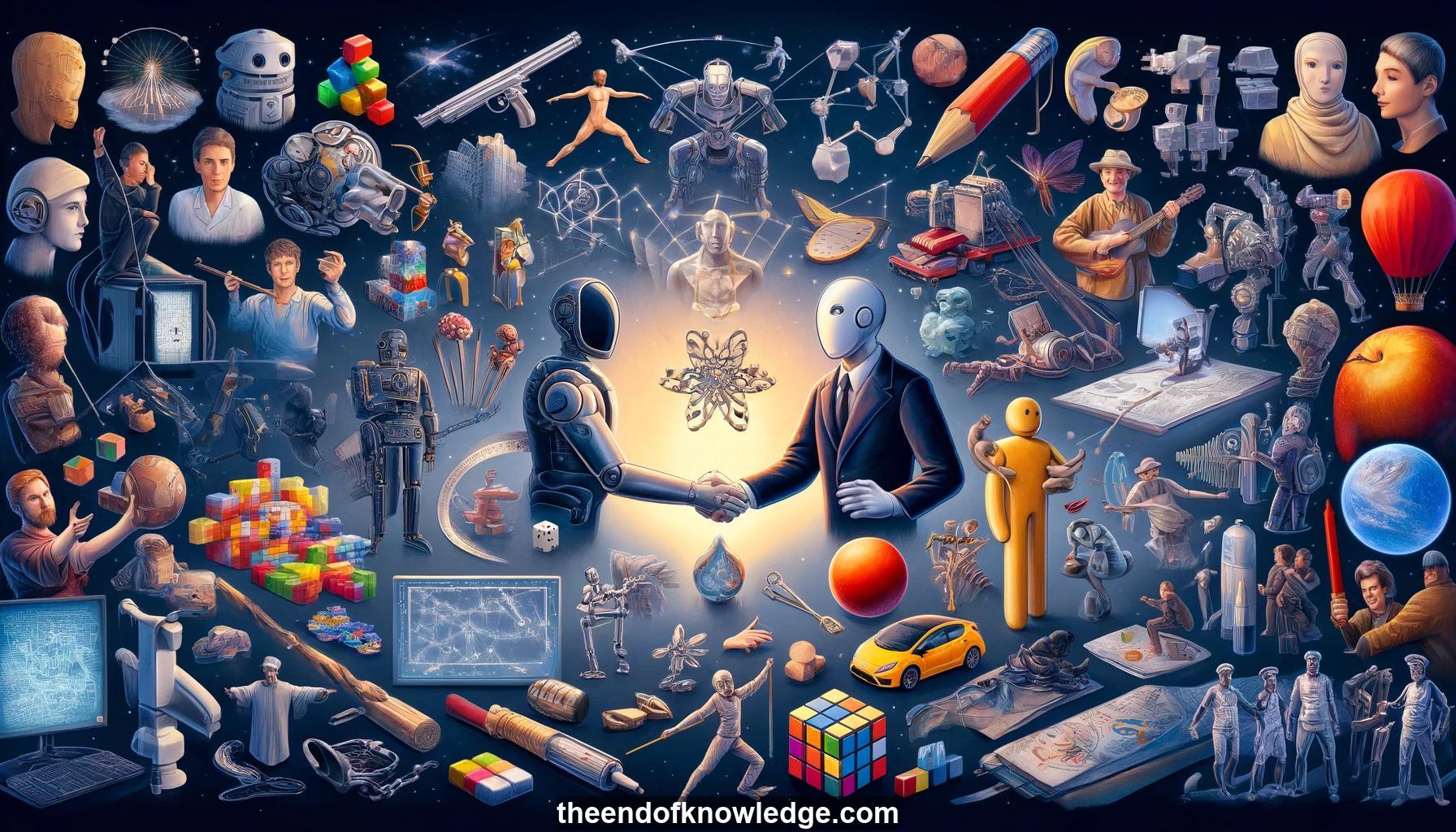 >
>
Concept Graph & Resume using Claude 3.5 Sonnet | Chat GPT4o | Llama 3:
Resume:
1.- Physical robot interaction: Developing robots capable of interacting with the world, humans, and each other through physical manipulation and collaboration.
2.- Object grasping and manipulation: Enabling robots to grasp and manipulate objects effectively, considering task requirements and object properties.
3.- In-hand manipulation: Developing techniques for robots to adjust object poses within their grasp for better task performance.
4.- Human grasping understanding: Studying human grasping to inform robotic grasping strategies and prosthetic design.
5.- Task-related grasping: Choosing appropriate grasps based on the intended task and object properties.
6.- Common sense reasoning: Incorporating contextual understanding and reasoning into robotic planning and decision-making processes.
7.- Hand tracking: Developing systems to track human hand movements and poses during object interaction.
8.- Predicting human intentions: Creating algorithms to anticipate human actions for improved human-robot collaboration.
9.- Manifold learning: Using techniques like GPLVM to understand the structure of human hand actions.
10.- Robotic hand design: Optimizing robotic hand designs based on human hand action manifolds and task requirements.
11.- Grasp moduli spaces: Developing a common representation for grasps and object shapes to enable transfer learning.
12.- Temporal grasping: Considering grasping as a continuous process involving observation, execution, and adaptation.
13.- Dual-arm manipulation: Exploring techniques for robots to use two arms cooperatively for complex manipulation tasks.
14.- Cluttered environment interaction: Developing strategies for robots to operate effectively in crowded or constrained spaces.
15.- Non-prehensile rearrangement planning: Planning push actions to rearrange objects without grasping them.
16.- Human motion prediction: Using machine learning techniques to predict future human movements for improved collaboration.
17.- Conditional variational autoencoders: Applying probabilistic models to generate distributions of possible future human motions.
18.- Learning from demonstration: Enabling robots to learn tasks by observing and interacting with humans.
19.- Reinforcement learning for human-robot interaction: Using RL to teach robots adaptive behaviors for collaborative tasks.
20.- Efficient learning in robotics: Developing techniques to reduce the amount of real-world data needed for robot learning.
21.- Dimensionality reduction in learning: Using encoder-decoder networks to simplify learning problems in high-dimensional spaces.
22.- Sim-to-real transfer: Transferring knowledge gained in simulation to real-world robotic systems.
23.- Embodiment understanding: Assessing a robot's capabilities based on its physical structure and degrees of freedom.
24.- Integrated perception and action: Developing systems that seamlessly connect perception, planning, and execution.
25.- Multi-sensory integration: Combining visual, tactile, and force feedback for improved robot perception and control.
26.- Natural human-robot interaction: Creating robot behaviors that feel intuitive and comfortable for human collaborators.
27.- Adaptive robot behavior: Enabling robots to adjust their actions based on human behavior and task context.
28.- Hierarchical learning: Structuring learning problems to address different levels of abstraction and complexity.
29.- 3D representation: Utilizing 3D information for improved human tracking and object interaction.
30.- Dexterous manipulation: Developing robotic systems capable of fine, precise object manipulation similar to human abilities.
Knowledge Vault built byDavid Vivancos 2024